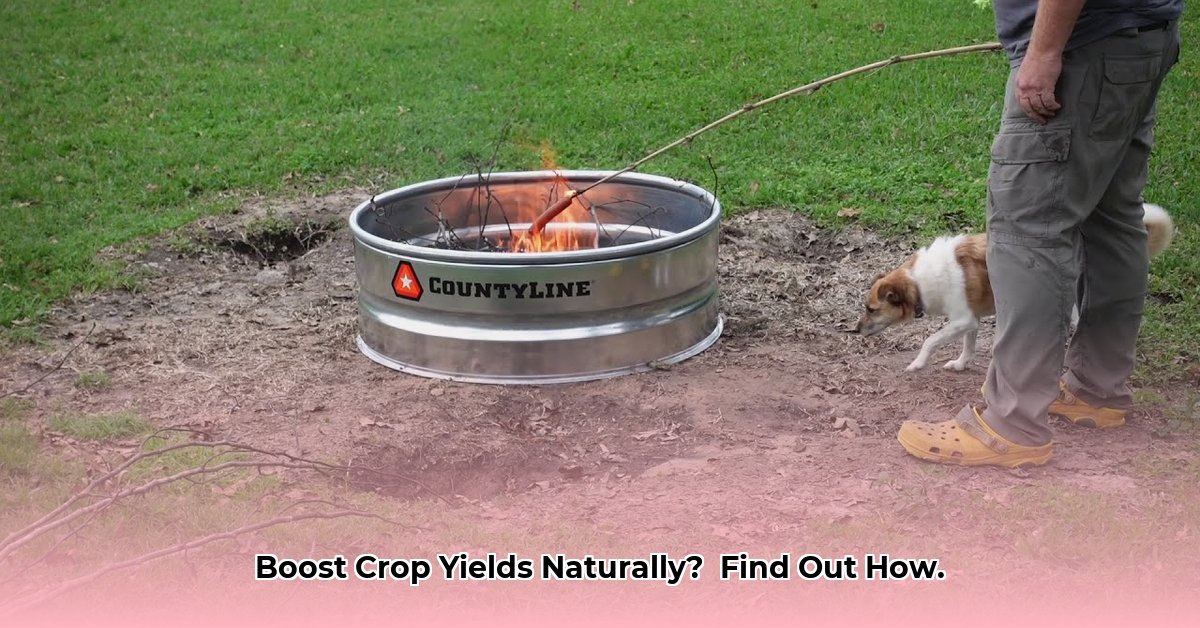
Controlled burning, when done correctly, can significantly boost crop yields and improve soil health. This guide provides a step-by-step approach to implementing controlled burns safely and effectively on your farm. For more sustainable farming practices, see this helpful guide.
Understanding the Benefits of Controlled Burning
Controlled burning, unlike uncontrolled wildfires, is a precise agricultural technique offering several advantages:
- Improved Soil Fertility: Burning agricultural residue returns essential nutrients to the soil, enriching it and promoting healthier plant growth. This mimics natural processes that replenish soil nutrients.
- Weed and Pest Management: Controlled burns can effectively eliminate weeds and certain pests, reducing the need for harmful chemical pesticides. This contributes to a more sustainable and environmentally friendly farming approach.
- Enhanced Soil Structure: Burning can improve soil aeration and water infiltration, leading to better root development and overall plant health. This leads to more robust and resilient crops.
A Step-by-Step Guide to Safe Controlled Burning
Before initiating a controlled burn, thorough planning and preparation are crucial. Follow these steps for a successful and safe burn:
1. Planning and Preparation: Begin by carefully assessing weather conditions. Avoid burning on windy or excessively hot days. Wind speed and direction are critical factors influencing fire spread. A calm day with minimal wind is ideal.
2. Area Preparation: Clear a wide perimeter (at least 10-15 feet) around the burning area, removing all flammable materials such as dry grass, brush, and debris. Ensure you have ample water, shovels, and other firefighting tools readily available on site.
3. Choosing Your Fire Pit Ring: Select a fire pit ring appropriate for the size of the burn area. Larger rings are necessary for more extensive burns. Ensure the fire pit ring is made from durable, fire-resistant materials.
4. Lighting and Monitoring: Begin the burn slowly, keeping the fire contained within the confines of the fire pit ring. Maintain constant vigilance, closely monitoring the burn’s progression and environmental conditions.
5. Extinguishment: Once the burning is complete, thoroughly douse the embers and ashes with water to ensure complete extinguishment. Continue monitoring the area for any lingering embers or signs of re-ignition.
6. Post-Burn Assessment: After the fire has been completely extinguished and cooled, inspect the burn area to ensure no remaining embers pose a risk.
Choosing the Right Equipment: Considerations for Fire Pit Rings
While various fire pits can be used for controlled burns, those specifically designed for agricultural use offer several advantages. These often incorporate features enhancing safety and durability. Consider factors such as:
- Size and Material: The size should suit the scale of your burn, while the material must withstand high temperatures and provide stability.
- Construction: Look for robust construction, ensuring the ring can withstand the heat of the fire without warping or breaking.
- Safety Features: Features like spark arrestors can greatly minimize risk.
Remember to always prioritize safety when selecting and using fire pit rings for controlled burns.
Potential Challenges and Mitigation Strategies
While controlled burning offers significant advantages, potential challenges exist:
- Air Quality Impacts: Smoke from controlled burns can affect air quality. Minimize this by burning on days with favorable wind conditions and by following local regulations.
- Uncontrolled Fire Risk: Even carefully planned burns can become uncontrolled wildfires. Prevent this through meticulous planning, adequate resources, and real-time monitoring.
- Legal Compliance: Local regulations and permitting requirements often govern controlled burns. Familiarize yourself with these regulations to ensure compliance before initiating any burn.
Dr. Emily Carter, Agricultural Extension Specialist at the University of California, Davis, emphasizes the importance of planning: "Thorough planning is paramount to ensure a successful and safe controlled burn. Carefully consider weather conditions and actively monitor the burn throughout the process. The payoff in soil health and weed reduction is significant but only attainable through safe methodology."
Sustainable Farming and Controlled Burning: A Synergistic Approach
By carefully executing controlled burns, farmers can drastically improve soil health, reduce pest pressure, and minimize the use of chemical inputs. It's a viable and sustainable approach to farming.
Remember to consult your local agricultural extension office or environmental agency for guidance on best practices and regulations in your area. Responsible use of controlled burning can greatly benefit your farm and contribute to a more sustainable agricultural landscape.